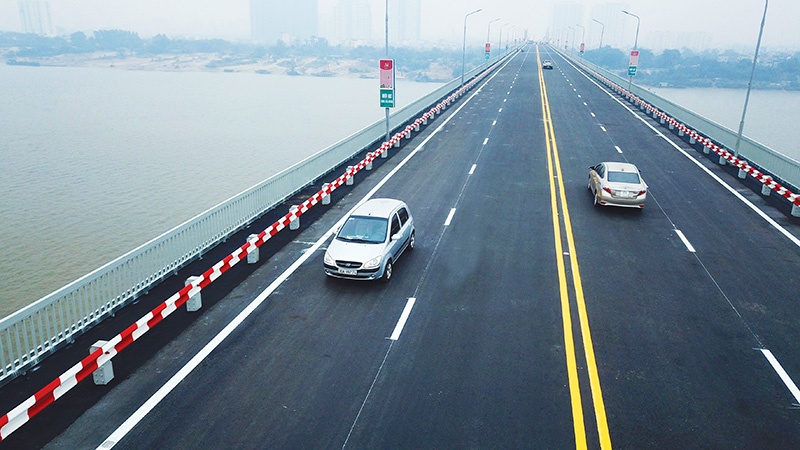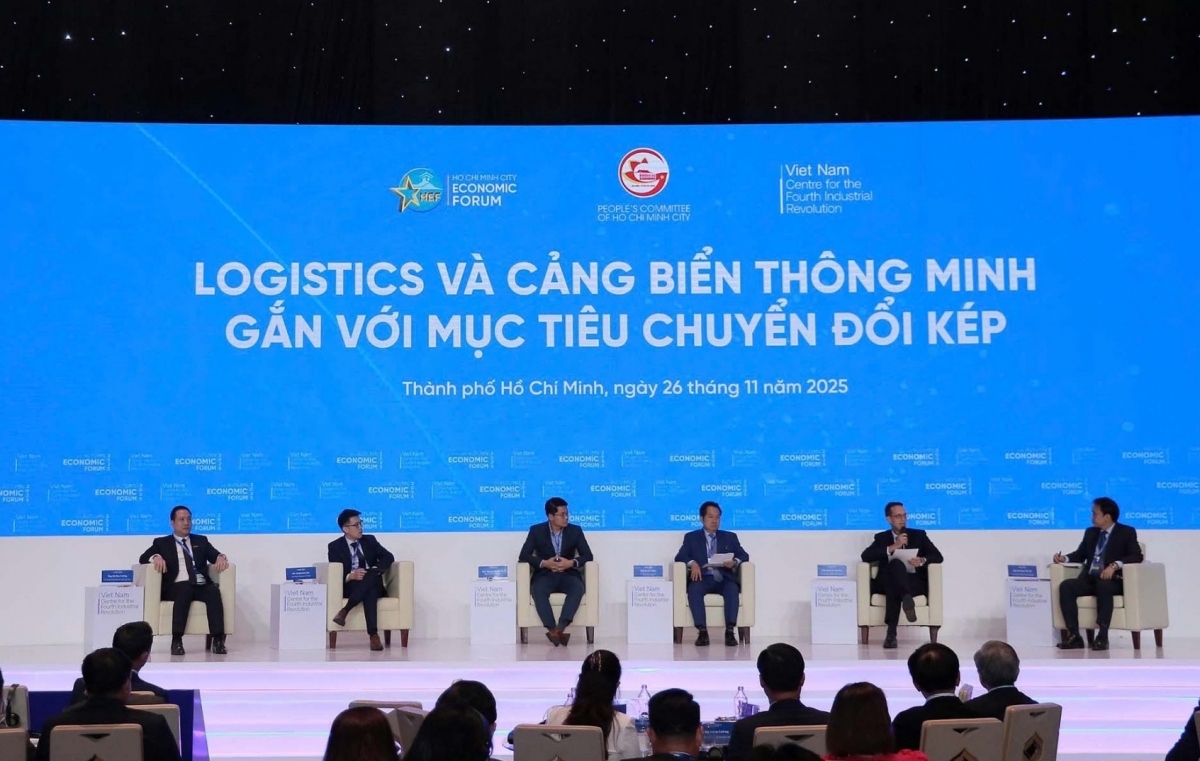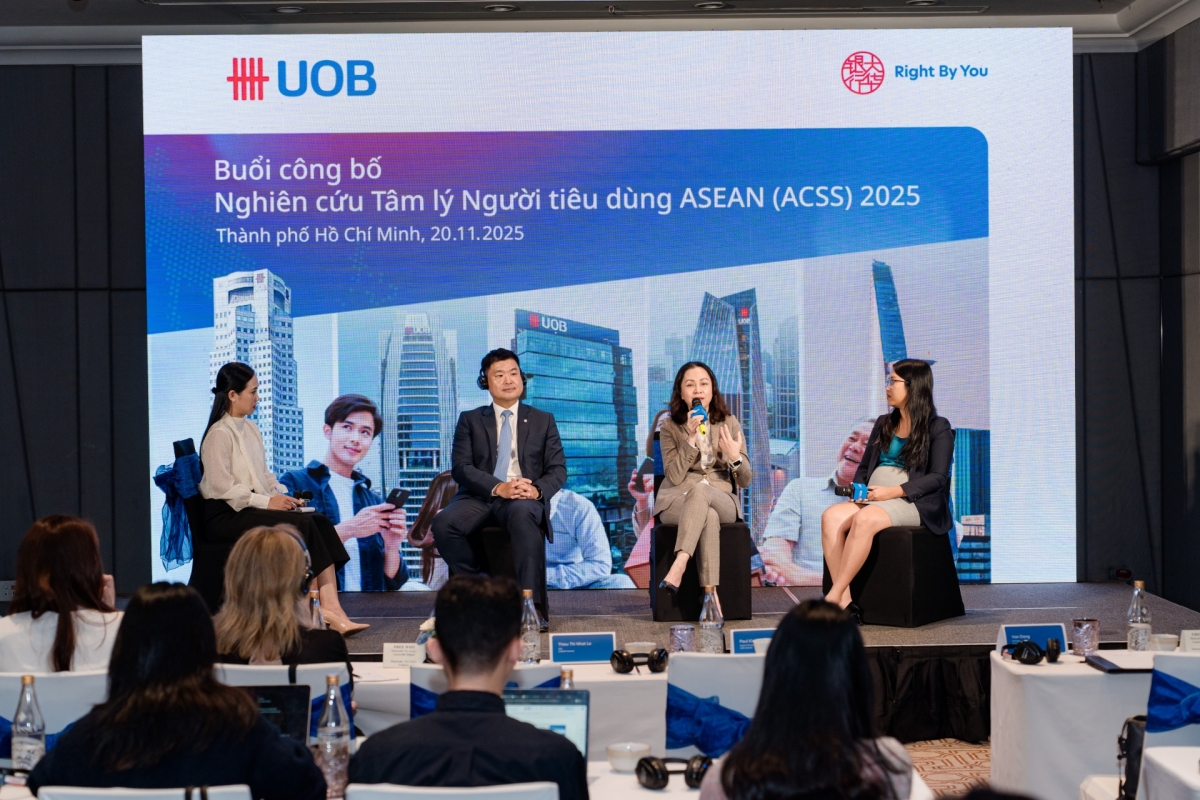INTERNATIONAL INVESTMENT
AND PORTAL
 Infrastructure projects have been one of the main contributors to increased property values Photo: Le Toan
Infrastructure projects have been one of the main contributors to increased property values Photo: Le Toan
According to experts, information on planning has never been released on such a large scale. From plans for developing a nationwide expressway system, airports, satellite cities, coastal roads, and special urban areas to plans to develop the banks of the Red River in Hanoi and the Saigon River – all of which are positively affecting the real estate market.
Dr. Tran Kim Chung, deputy director of the Central Institute for Economic Management commented, “The implementation of comprehensive policies is positive for the economy and the real estate sector. Real estate will be very favourable from 2022 because last year saw a series of infrastructure projects that boost the market.”
The factors that create the strongest growth momentum for the real estate market in 2022 are the removal of policy bottlenecks, the resilience of the economy, and investment inflows, along with reduced interest rates from banks.
“These will be important drivers to render the fast-moving real estate industry a bright spot in 2022, especially when there are many policies to disburse funds for accelerated projects,” Chung added.
Since 2010, Vietnam has planned and implemented the construction of public transportation routes to improve the infrastructure system to meet the country’s increasing demand.
In Hanoi, nine urban railways and metro routes were planned with a total length of more than 410km. Among those, the elevated railways are the landmark of the traffic system, pushing up the development potential of the involved areas.
The first-ever elevated metro from Cat Linh to Ha Dong, which was put into operation in November, has already had dozens of real estate projects built around.
Nguyen Xuan Lam, representative of Phu Loc Phat Real Estate in Cau Giay district, said that almost all projects near the metro line reported price increases of around 30 per cent in December.
Outstanding projects along this route are the Discovery Complex, FLC Star Tower, D’Le Pont D’or, Phu Thinh GreenPark, and the Ho Guom Plaza.
Meanwhile in Ho Chi Minh City, despite the delay of the metro route connecting Ben Thanh to Thu Duc district, more than 30 property projects are developed along with this system, creating an investment wave in the neighbouring areas.
Some benefited projects are Vinhomes Golden Rivers, Centennial Saigon, Vinhomes Central Park, and The Madison.
The development of infrastructure projects also drives up real estate prices in neighbouring areas. The price of real estate projects in the districts that this metro line passes through in 2015-2020 increased sharply by about 150-200 per cent compared to other areas.
Existing projects located along the route have also increased by 15-50 per cent compared to the original selling price.
According to Nguyen Huy Cuong, director of the East Area of Khai Hoan Land Real Estate JSC, Ho Chi Minh City’s metro line will play an essential role in the city’s transport system when it is put into operation in 2022.
“The metro will help Ho Chi Minh City to become more connected to neighbouring areas. This is the premise for the long-term development of the entire east of Ho Chi Minh City. Real estate projects located around the metro line will also benefit greatly and increase in price dramatically,” said Cuong.
Research in major markets worldwide shows that housing products within walking distance from metro stations will often have higher selling prices than units located in other areas. Price hikes are even recorded before the metro works are completed.
In addition, many real estate companies also believe that civil projects located near the public transport system always have higher rental and selling prices than other projects. In other Asian markets, house prices for projects near public transport systems are often 6-25 per cent higher than the average.
Looking at other megacities in Asia such as Bangkok, Manila, and Jakarta, new infrastructure have opened new doors for these cities to attract capital and stimulate demand for housing and other real estate types.
Ho Chi Minh City so far has set up plans to develop eight metro lines with a total length of about 220km, with an estimated total investment of nearly $25 billion. All areas of Ho Chi Minh City are in the race of urbanisation, and so is the opportunity for the property market.
Meanwhile, in the plan to develop Hanoi to 2030, the city also mentions a network of eight urban railway routes with a total length of more than 300km.
According to the Ministry of Transport, in the next five years, 67 new important traffic projects will begin construction, in which priority is given to many expressways.
Of these, six were identified as important national projects, including the North-South Expressway, the Chau Doc-Can Tho-Soc Trang expressway, and the Khanh Hoa-Buon Ma Thuot expressway.
Prof. Dr. Tran Dinh Thien - Former director Vietnam Institute of Economics

Real estate plays an essential role in the economic recovery process. Real estate growth in 2022 is associated with the variable that is the ability to disburse public investment, besides disease control, to continue to cover the vaccine quickly.
In particular, public investment disbursement is an extensive national programme related to arterial traffic routes, which strongly influences the real estate market. The speed of disbursement of public investment needs to be more positive to support the real estate market in 2022.
Real estate is associated with industrialisation, modernisation, and urbanisation in the long run. Investors and developers must approach smart and innovative cities combined with regional economic support in the new context, rather than just stop building houses for sale.
Hoang Huu Phe - Urban planning expert and architect

The influence of infrastructure on the price of real estate is significant, especially transport, which is considered extremely important in socioeconomic development. The government often chooses a transport system as the first step to create impetus for other infrastructure to develop and it is also fundamental for attracting investment capital from investors. As a rule of thumb, infrastructure is the driving force in increasing prices for real estate.
Vietnam’s real estate market is extremely sensitive to planning information. Whenever there is information that a project is about to be implemented, even if local authorities have not confirmed it, the property prices in that area immediately increase. Purchasing transactions take place continuously and sometimes, this exceeds the actual value of real estate products in the market, creating a virtual fever. Therefore, we need a good enough master plan for developing the property system in every province or city.
David Jackson - General director Colliers International (Vietnam)

The value of apartment projects along Metro Line 1 of Ho Chi Minh City has increased by more than 50 per cent compared to three years ago when they just opened for sale. The appearance of further metro lines will increase real estate value around those areas in the future as they will better link the central area and the city’s west and east areas, as well as development offices for lease and shopping mall projects located along the two sides.
In addition, the planned metro lines 2-4 will expand the land fund, helping to develop commercial and service real estate types to be in line with the fast urbanisation speed of Ho Chi Minh City.
In addition, when the first three lines are put into operation, the east, west, and city centre will be closely connected, which is convenient for the development of projects near the station into the office for lease and retail projects.



















